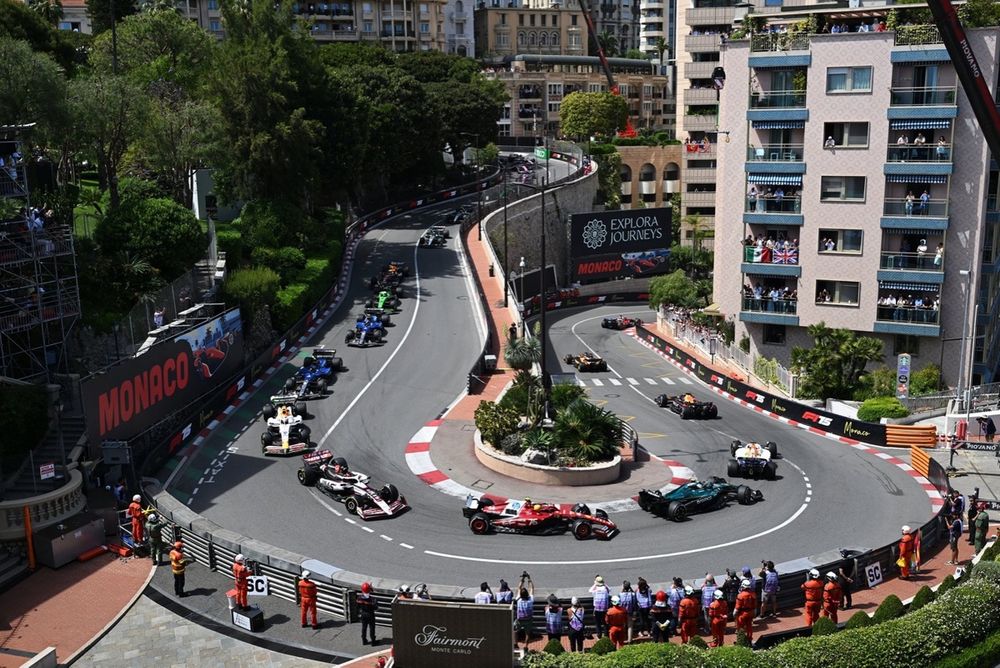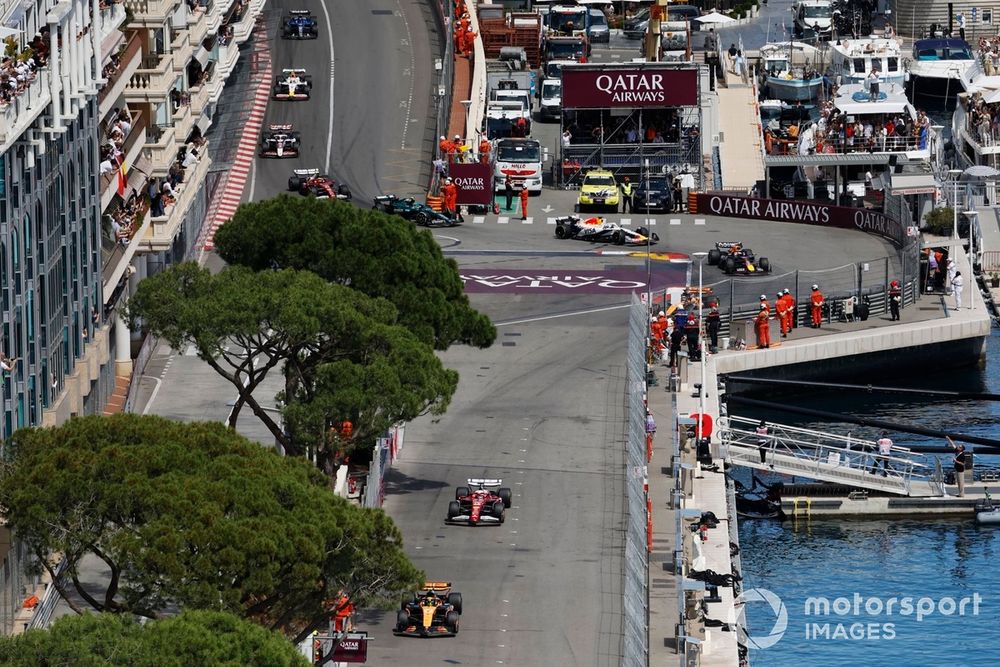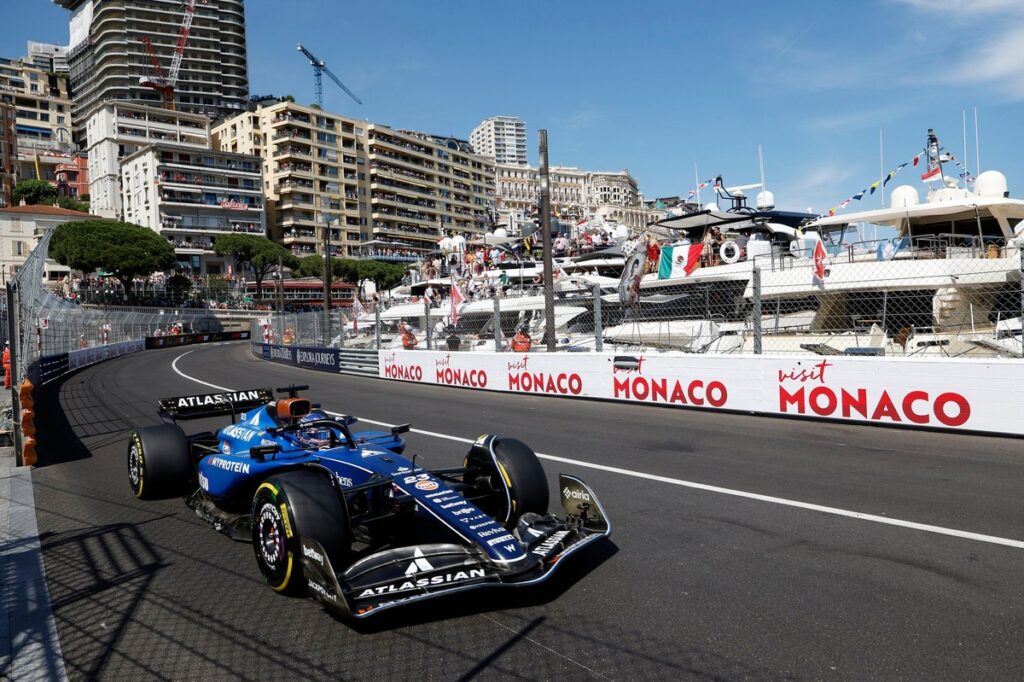In his memoirs, Monaco Grand Prix founder Antony Noghes detailed the days and weeks he spent wandering the streets of the Principality, trying to work out a route for his proposed motor race.
“Today,” he concluded with a flourish, “the roads comprising this circuit look as though they were made for the purpose.”
Those racing in modern Formula 1 might agree to disagree. In recent years there have been calls to amend the circuit to improve the prospects of overtaking, and these voices have resurfaced after an attempt to transform the spectacle by making two tyre changes compulsory fell flat at the 2025 Monaco GP.
“We know that the width of the city or the width of the street is [what it is], and the cars are quite big, so the attempt is to create attention to that,” F1 CEO Stefano Domenicali told Sky.
“And it was great to see that the day before [the race], everyone was thinking that they wanted to stop on the first lap and [there was] a lot of discussion, so no one understood anything fully. And I think it was the right attempt, and the attention was definitely there.
“And of course you know that teams took their strategy out of [the pitstop rule]. The good thing is that we are talking about it, and that’s what we wanted.”
The challenge is that while Monaco exists in an almost constant state of redevelopment, it occupies a piece of real estate not much larger than New York’s Central Park and there is little scope for significant change in the road layout.
But former F1 driver Alex Wurz, who is also the chairman of the Grand Prix Drivers’ Association and runs his own circuit design consultancy, has proposed three changes which could be executed relatively easily.
In a video posted on X and Instagram, Wurz outlined both the shape of the amendments and the thinking behind them.
Alex Wurz, Toyota Gazoo Racing
Photo by: Andreas Beil
His first change is to move the apex of La Rascasse, the penultimate corner, out by two to three metres. Coupled with a widening of the circuit boundary on the drivers’ left on the approach to this area, Wurz aims to create a dilemma.
“You open the corner much more for a ‘dive bomb’ [lunge on the inside line],” he explained. “Any driver ahead will either have to defend [the inside line] or accept he leaves the door open.”
This is relatively achievable given the built environment in this area, since there is no kerbing on the left. But it would create a pinch point for pedestrians around the edge of the quayside in what is always a busy area, one that is also used by drivers and team personnel, who need to cross a bridge to access the pitlane from the paddock.
There is also a hard limit in the form of the entry to the underground car park on Quai Albert 1er, which has concrete kerbing with integral steel guardrails. F1 might also chafe at the loss of space for its Paddock Club marquee, which fits in around here.
Wurz’s two other proposed changes are intended to work in combination with one another. A wider entry to the famous hairpin, site of Monaco’s railway station until the 1960s, would create more opportunities for the kind of move Gabriel Bortoleto pulled on Andrea Kimi Antonelli at the start of this year’s race.
Essentially, it would force drivers to compromise their entry to the corner to cover the inside line, rather than the present arrangement where one can easily just occupy the middle of the road. But to facilitate this, the exit would have to be widened as well.

Lewis Hamilton, Ferrari, Max Verstappen, Red Bull Racing, Liam Lawson, Racing Bulls Team, Fernando Alonso, Aston Martin Racing, Esteban Ocon, Haas F1 Team, Isack Hadjar, Racing Bulls Team, Carlos Sainz, Williams, Alexander Albon, Williams
Photo by: Sam Bagnall / Motorsport Images via Getty Images
F1 cars already require small modifications to achieve the turning radius required to get around this corner on the normal line. Widening the track at the entry would be a relatively straightforward piece of civil engineering since the conventional roadside kerbing stops just ahead of the corner, replaced by permanent soft-radius F1 kerbing.
But it would mean the loss of a pedestrian path since there is a low wall on the inside. Widening the exit would pose challenges since it involves removing a kerb and pedestrian footway, and building the road out to the boundary wall of the residential tower block next door to the Fairmont Hotel.
“The actual racing line would not change,” explained Wurz. “It would not change the character of this corner. But it would enable an overtaking ‘dive bomb’.”
At the moment the hairpin acts as something of a bottleneck, and when the cars bunch up there are no clean opportunities to pass until the Nouvelle Chicane, at the end of the tunnel. Passing at Portier requires the driver ahead to capitulate; this year Bortoleto ended up in the barrier when Antonelli reclaimed the position he’d lost at the hairpin. In previous years, Alpine drivers Pierre Gasly and Esteban Ocon came to grief there, and Jenson Button left Pascal Wehrlein’s Manor lying on its side against the barrier.
Wurz’s intention is that drivers having to compromise their entry to the hairpin to maintain a defensive line will be paying for that all the way through to the tunnel, where his most significant proposed change is waiting. Here he suggests moving the Nouvelle Chicane 80 metres up the road towards Tabac.
This change would enable the entry to be wider, since at the moment the left-hand side is bounded by a concrete balustrade just inside the temporary barriers. That section of the Avenue John F Kennedy is currently used as run-off but it could easily be extended. It will also create a straighter approach to the braking area, since there is only one line through the curve of the tunnel.

Charles Leclerc, Ferrari, Lando Norris, McLaren, Oscar Piastri, McLaren
Photo by: Glenn Dunbar / Motorsport Images
The major civil engineering challenge is that it would require the quay to be built out slightly into the harbour in the new location – but a similar project was required to arrive at the present chicane arrangement. Originally the chicane was bordered only by bollards – it was there that Alberto Ascari crashed into the harbour in 1955, and Lorenzo Bandini lost his life in 1967.
“I am very convinced,” said Wurz, “from my own experience watching the races and talking to my fellow drivers, that moving the chicane later, which physically with the constraints any city has, should be possible.
“It means the defending this corner – which is quite easy to do, with the kink [through the tunnel] and the bumps – will become more difficult.”
The exit of the chicane would likely be smoother and straighter than the present arrangement since Wurz is eager to preserve the challenge of Tabac, the left-hander that, at the moment, requires a feathering of the throttle or even a dab of the brakes.
Famously, this is where a freak wave caused nine of the 19 starters to crash out on the opening lap of the 1950 Monaco Grand Prix, which enabled Juan Manuel Fangio to slip away and win by more than a lap.
It was also where, in the 1933 event, Rudolf Caracciola suffered injuries that left him with one leg shorter than the other after the brakes of his privately entered Alfa Romeo failed and he crashed into the stone steps on the outside of the corner.
“We have a very fine hospital here in Monaco,” the proprietor of the Tabac assured him. “Lots of famous people have died there.”
“All drivers love the Tabac corner dearly,” said Wurz. “It’s my favourite corner on this track, really difficult. We have to time the gap [between the exit of the proposed chicane and the entry to Tabac] in the sense that it’s not flat out, you still need to lift and touch the brake slightly, to not change the character.
“This is very close to the hearts of all the race drivers.”
In this article
Be the first to know and subscribe for real-time news email updates on these topics
Subscribe to news alerts
Read the full article here

